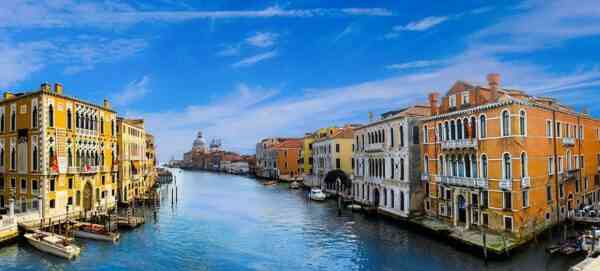Romantic Venice is the most famous and interesting city on the water. There are other cities in the world, riddled with canals and rivers, but it is here that some incredible number of tourists are attracted every year. And it is a pity that this wonderful place is slowly but surely sinking into the water, and our descendants, most likely, will not see it anymore.
Facts about the city of Venice
- One One of the most interesting and visited places in Venice is the Church of Santa Maria della Salute. Like other buildings here, it stands on piles, of which about a hundred thousand were installed during construction.
- In the 17th century, a terrible plague epidemic swept through Europe, one of the strongest in human history. Then about 30% of all citizens died in the city on the water.
- In the Middle Ages, among the Venetian ladies of noble origin, it was considered beautiful to have white hair. They bleached them with horse urine, which contains a large amount of ammonia (interesting facts about the Middle Ages).
- The longest of the Venetian canals is the Grand Canal. Its length exceeds 3800 meters.
- It was from Venice that Marco Polo came, the great traveler who spent many years in Asia and who introduced Europeans to the culture of China and Mongolia.
- The Italian city on the water is on the list of the most visited tourist cities in the world. Every year, up to 15-18 million of them arrive here, despite the high prices.
- There is only one cemetery in Venice. Due to lack of land, burials are exhumed every seven years, after which the remains are transferred to the columbarium, and new places are vacated in the cemetery.
- Judging by the speed with which the city is sinking under its weight, at the beginning of the next century it may go completely underwater.
- Almost all houses in Venice are built on stilts. Larch wood was used more often than others, because it does not rot in salt water. Building materials were brought here mainly from Siberia.
- While in most European cities every effort is made to popularize bicycles, in Venice they are banned. The sidewalks here are narrow almost everywhere, and cyclists interfere with pedestrians.
- A problem for the city is created by high tides, sometimes flooding the lower floors of buildings. To reduce their level, they even built special offshore structures that cut off the waves.
- Venice has been rebuilt twice in its history. The reason is simple – buildings are slowly sinking, and the lower floors are becoming uninhabitable.
- In the heat, Venetian canals stink in many places. This slightly spoils the romantic atmosphere of this place.
- Venice is considered the most expensive city in Italy to live in, even more expensive than Rome or Milan (interesting facts about Milan).
- The country of Venezuela, in South America, was named after this city. The discoverer Amerigo Vespucci simply thought that the houses of the local natives, which they built on piles, resemble Venice.
- When extinguishing fires here, firefighters use tanks only fresh water. It is forbidden to use salt, as it causes irreparable damage to ancient buildings.
- As elsewhere in Italy, Venice has a developed «recommendation system». Coming to a restaurant or, for example, to a hairdresser, on the recommendation of one of the regular visitors, you can count on the most courteous attitude and a pleasant discount.
- There are no cars here at all, just like motorcycles or buses. Of course, there is public transport – these are boats, they are also river buses.
- Venetian gondoliers earn very well, and getting a gondolier license is incredibly difficult. In the whole city, according to the old law, there can be only 425 gondolas.
- In addition to an impeccable knowledge of all the addresses in the city, gondoliers must be able to sing well, and at the request of the client, they must provide him «musical accompaniment».
- The profession of a gondolier in Venice has long been considered masculine, although this there was only tradition, not some discriminatory law. The first female gondolier appeared here at the beginning of the 21st century.
- Plumbers may not expect to find work in Venice, because there is no sewerage system in this city, and all waste is discharged directly into canals. That’s why they sometimes smell.
- All the gondolas in the city on the water are completely identical in size – 1.4 meters wide and 11 meters long. They are designed to carry a maximum of six passengers.
- At the end of autumn, the water level in Venice usually rises, and the city is slightly flooded. Therefore, you should not go here in November-December (interesting facts about autumn).
- It was here that the famous composer Antonio Vivaldi lived and worked in the 18th century. True, he was remembered by his contemporaries as a virtuoso violinist – one of the ancient city guides calls him and his father the best city violinists.
- Part of Venice is located on land, the mainland. This is Mestra, its suburb.
- The city on the water grew on a scattering of islands, which were gradually built up, and then connected by canals. The historical center, for example, lies on 118 islands.
- In all of Venice, only about 260 thousand people live.
